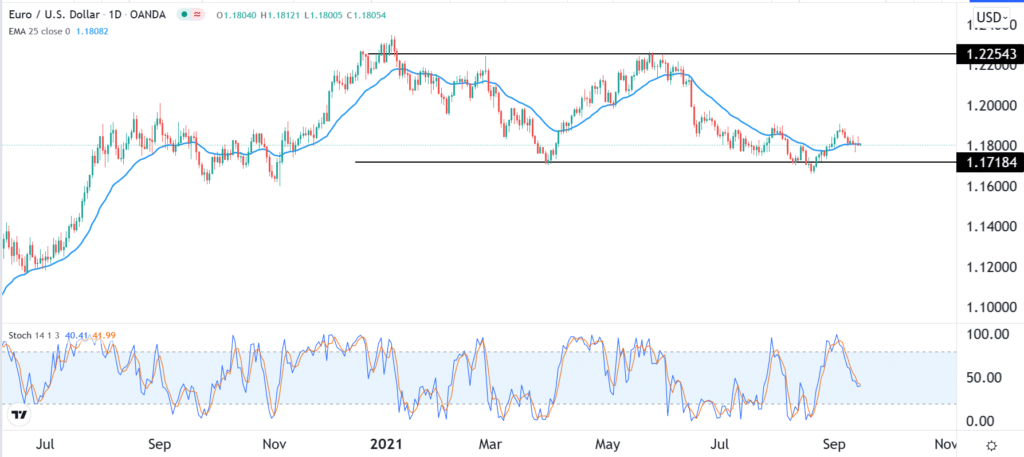
The EURUSD is in a consolidation mode as investors reflect on the American consumer inflation data and the potential for Federal Reserve tapering in the coming meeting. The pair is trading at 1.1810, which is slightly below this week’s high of 1.1845.
American inflation easing
The biggest catalyst for the EURUSD this week was the American inflation numbers that were published on Tuesday. The data showed that inflation cooled in August but remained stubbornly high as businesses raise prices.
According to the Bureau of Labor Department, the headline consumer price index (CPI) rose by 0.3% in August, down from 0.7% in the previous month.
This decline was mostly attributed to the automobile and hospitality sectors. Recently, many airline companies like Delta, JetBlue, and Southwest have lowered their guidance signalling that the industry is slowing down.
The CPI declined from 5.4% to 5.3% on a year-on-year basis while core CPI fell from 4.3% to 4.0%. The latter number typically excludes volatile food and energy prices. The key contributors to inflation were gasoline and restaurant prices.
Still, the American CPI was higher than the Federal Reserve’s target of 2.0%. Therefore, there is a likelihood that the Fed will follow through with the statement from Jerome Powell that it will start tapering asset purchases soon. This could happen during the September meeting that is scheduled for next week.
US retail sales ahead
The EURUSD will react mildly to the other important numbers scheduled for this week. The most important one will be the American retail sales numbers scheduled for Thursday.
These numbers are vital because of the millions of Americans who work in the retail sector and the fact that consumer spending is the biggest part of the economy.
Data compiled by Investing.com show that analysts expect that the country’s retail sales remained under pressure in August. Precisely, the headline retail sales are expected to have dropped to -0.8% while core retail sales fell by 0.2%.
The weakness in retail sales will likely be because of the relatively higher prices and the fact that inflation is eroding spending power. For example, data by the Atlanta Federal Reserve showed that the country’s real wages adjusted for rising prices fell by 0.5% in August.
The EURUSD will also react to the Philadelphia manufacturing index and initial jobless claims numbers. Analysts see the initial jobless claims rising from 310k in the previous week to 328k.
EU inflation
The next key catalyst for the EURUSD will be the Eurozone consumer inflation data scheduled for Friday this week.
While the data is important, its impact on the EURUSD will be limited. Besides, Eurostat already published its preliminary figure two weeks ago. Historically, the final data does not have a major change from the preliminary figure.
The preliminary data showed that consumer prices rose by 3% in August. This was a percentage higher than the European Central Bank (ECB) target of 2.0%. The data will come a week after the ECB delivered its interest rate decision.
EURUSD forecast
The daily chart shows that the EURUSD pair found strong support at the 1.1720 level. The pair struggled to move below this level in March and in August. It is also oscillating at the 25-day moving average while the Stochastic oscillator has moved from the overbought level to the neutral zone.
It has also formed a rectangle pattern. Therefore, in the long term, the pair will likely resume the bullish trend as investors target the upper side of the channel at 1.2250. However, a volume-supported drop below 1.1720 will invalidate the bullish view.









Leave a Reply